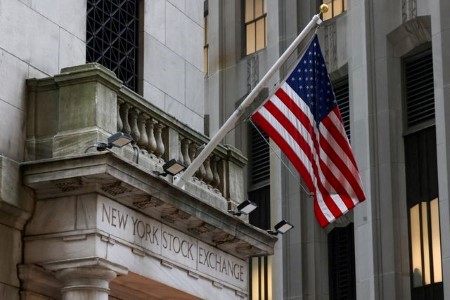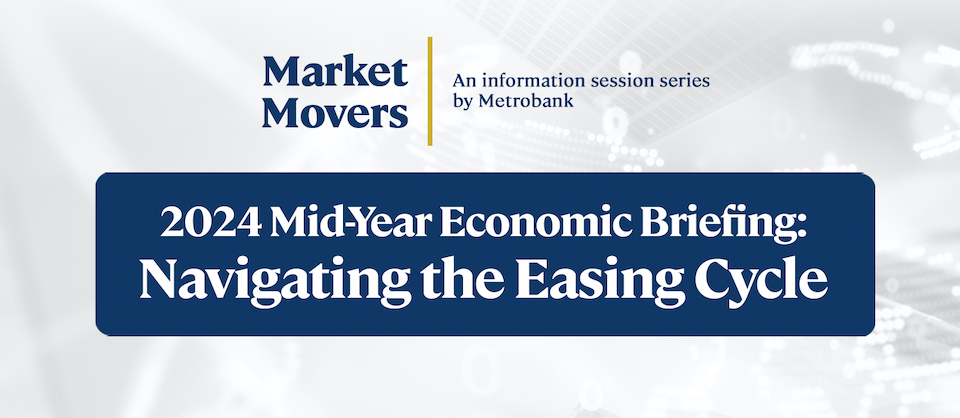




Quarterly Economic Growth Release: More BSP cuts to come
 DOWNLOAD
DOWNLOAD

Monthly Economic Update: Fed catches up
 DOWNLOAD
DOWNLOAD

Inflation Update: Steady and mellow
 DOWNLOAD
DOWNLOAD


Investors RoW back on Wall Street exceptionalism: McGeever

ORLANDO, Florida – As the end of the first quarter approaches, world stock markets are in a curious position. They are benefiting from capital flowing out of Wall Street, but they also face major risks if the US selloff turns into a rout.
As President Donald Trump’s trade war has snuffed out the “US exceptionalism” narrative, a yawning gap has opened between US equities and those in the ‘Rest of the World’.
The selloff abated briefly and the S&P 500 notched its first consecutive daily rises in a month. But Wall Street was back in the red on Tuesday, and US underperformance – the widest in more than 20 years, by some measures – shows little sign of reversing course.
Indeed, history suggests this gap could widen further, although only if the US economy avoids tipping into a serious recession.
CORRECTION THRESHOLD
As the S&P 500 flirted with 10% correction territory last week, ‘RoW’ markets were outperforming by as much as 9 percentage points, the biggest such gap since 2002, according to strategists at Citi.
Historically, when US corrections eclipse the 10% mark but don’t breach the 20% ‘bear market’ threshold, Wall Street underperforms over the entire downturn, Citi noted. In US bear markets and recessions, however, no country or market is immune – growth and asset prices everywhere suffer.
This scenario appears to be unfolding. Most economists agree that US growth will slow this year, but few think it will fall off a cliff. While the Atlanta Fed’s GDPNow model is signaling a 2.1% contraction in Q1, that remains an outlier.
Contrast that with the sudden improvement in Germany’s growth outlook thanks to Berlin’s proposed fiscal bazooka. Beijing also appears ready to do whatever it takes to support China’s economy and markets – call it the ‘Xi put’.
Indeed, the tailwinds for RoW outperformance seem to be building.
CROWDED OUT
The rotation out of Wall Street to the rest of the world has been underway all year. Bank of America’s March fund manager survey shows that allocations to eurozone markets are the highest since 2021, while US allocations plunged at the fastest rate on record.
This might suggest the switch has run its course. But the same survey also showed that the most crowded trade is still ‘long’ the Magnificent Seven shares of America’s biggest tech firms.
And even though US earnings multiples have fallen to the lowest point since September, they remain lofty by historical standards due to Big Tech’s still-rich valuations. Indeed, US stock valuations remain well above those in other developed markets, so this rotation may be far from over.
FINE LINE
“Corrections are healthy, they’re normal,” Treasury Secretary Scott Bessent told ‘Meet The Press’ on Sunday, adding: “I’m not worried about the markets.
Corrections are indeed normal and healthy, occurring roughly once every couple of years with an average decline of 14%. As Mark Riepe at Charles Schwab points out, of the 27 corrections since 1974 including the current one, only six have gone on to become bear markets.
But Bessent’s remarks could also be interpreted as a sign of how relaxed the Trump administration is about the current decline, suggesting they won’t act to prevent a further slide. It’s a risky stance to take at such a delicate juncture for the economy.
And the RoW needs to watch out, because its outperformance will likely only continue if the US doesn’t implode. As Dario Perkins at TS Lombard notes, “Make no mistake – a US recession would bring down the entire world.”
That would quickly wipe out Wall Street’s underperformance, but unfortunately, also a whole lot more.
(The opinions expressed here are those of the author, a columnist for Reuters.)
(By Jamie McGeever; editing by Deepa Babington)
This article originally appeared on reuters.com





 By Reuters
By Reuters